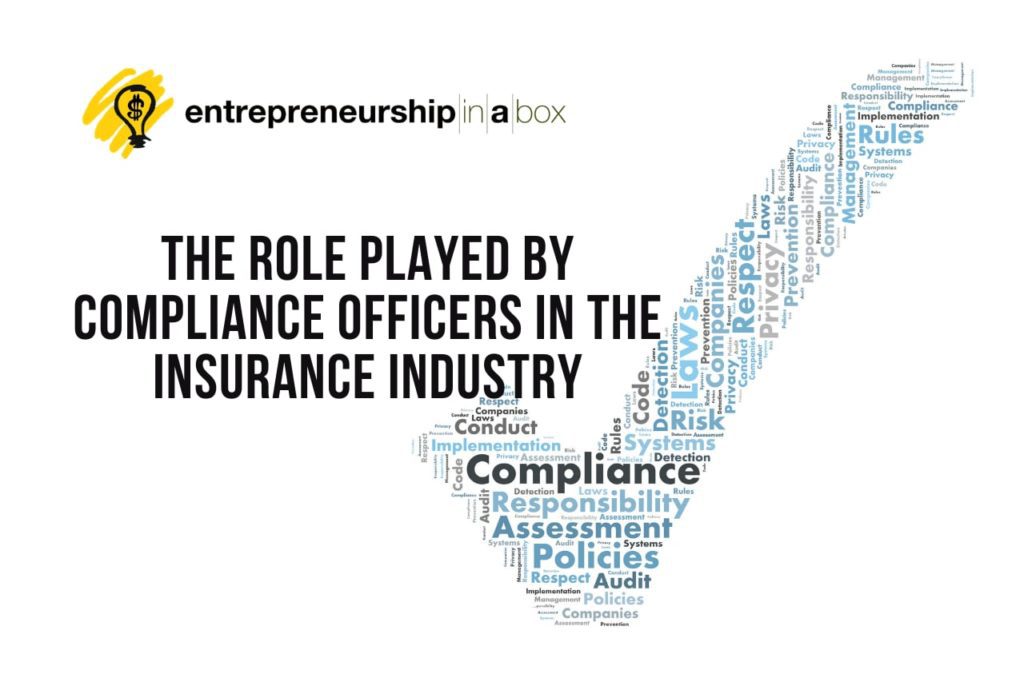Most activities around insurance company data security emphasize creating stronger data protection strategies. Unfortunately, many companies overlook the key role of insurance compliance officers in protecting sensitive company data.
With more companies digitizing their information, insurance companies have also joined the fray by digitizing payment collection, premium setting, and claim settlement. Unfortunately, these policies come with additional security challenges.
The Roles and Responsibilities of Insurance Compliance Officers
There is a lot of information that insurers collect from their clients. Since the term “insurance” encompasses many types of services and products, it is difficult to create a system that protects all types of data. While general liability, life, home, auto, and health care insurance services are the backbone of this industry, there are many other insurance products in the market.
Consequently, healthcare insurance providers must collect information in a manner that is consistent with the law. For instance, they should comply with HIPAA. The law stipulates how account details, social security numbers, and birthdates should be collected and stored.
It is not just the data collected from clients that must be protected from unauthorized actors. Any information processed by the insurance company should undergo various protection mechanisms and procedures. As a result, the insurance company must come up with PCI DSS protocols for compliance reasons. These protocols protect the insurance companies’ payment systems.
You can even go so far as taking the step of getting https://www.dataguard.co.uk/frameworks/iso-27001/. This framework provides you with a clear path to protecting the integrity of data, and is also a valuable asset to look for in any organization or service that you partner with in your operations.
Emerging Threats in the Insurance Industry
Accenture published a cybersecurity report towards the end of 2017. The report detailed the emerging and existing threats in the insurance market. Observers were concerned by the worrying statistics, such as:
- There are 113 security threats targeting the average insurance firm every year.
- 21% of cybersecurity leaders in big insurance corporations did not trust their companies’ cybersecurity strategies
- 61% of insurance companies were unable to detect cybersecurity threats in the month that they occurred
- 66% off insurance companies did not maintain robust backup and response systems
- Only about two-thirds of cybersecurity lapses are discovered and dealt with.
This is an indication of the serious disconnect between insurance companies, their customers, and cybersecurity teams. Something needs to be done because many insurances would be reluctant to enter the insurance market.
Cyber Security Threats Targeting Mid-sized Insurance Companies
Mid-sized insurance firms undergo the same challenges that large insurance companies face. However, mid-sized insurance corporations don’t have the same financial and personnel resources as large companies. Consequently, compliance officers working at mid-sized insurance companies have more responsibilities than those working in large insurance companies. The resultant complexity drains resources and exposes the insurance firm to further problems.
Major insurance companies have massive IT departments. In some cases, some of them have several people working in the compliance department. This is a far cry from mid-sized companies that usually have one compliance officer.
How Can Insurance Companies Deploy Risk Management Capabilities?
Insurance companies must identify, comprehend, evaluate, and control risks. The established standard is to follow five straightforward steps in mitigating emerging risks.
1. Catalog Data Assets
Your insurance company should pinpoint the various classes of data that your business processes before it can come up with a risk management protocol. Some of this information may be a financial risk to the general operations of your company. For instance, you should be careful with IP addresses, account information, social security numbers, birth dates, and names.
2. Understand Applications, Networks, Transmission, and Storage Systems
After your company has collected data, it must store it in a secure and compliant manner. In some cases, you may also need to share the information with some of your partners.
Most corporations use cloud computing for data storage because it eases the process of recovery and backup. Other corporations prefer shared cloud storage because this can be accessed by all internal stakeholders.
Some companies have begun using internet-based systems where customers can examine their data. The idea is to increase data transparency and collection.
3. Enumerate Potential Threats
Your external and internal applications, as well as your network systems, are vulnerable to dynamic threats. Employees remain the weakest point in your data protection architecture. Some of them can maliciously or unwittingly interfere with sensitive data. It is your job to conduct routine information review exercises where you identify network and system threats.
Companies using web-based applications can utilize advanced encryption methods to prevent SQL attacks. This is because some hackers use browsers and systems as staging grounds for new attacks.
4. Create Policies and Mechanisms for Accessibility and Integrity of Data
Protecting information requires the creation of robust controls. After you have identified weak points in your data ecosystem, you need to seal all the loopholes. For instance, if you are afraid that your employees can interfere with data confidentiality, you can introduce user-based authentication. On the other hand, endpoint security and advanced firewall systems can prevent external attacks.
5. Audit the Effectiveness of Your Controls
Your stored information will always be vulnerable to attacks. Even as you implement new mechanisms and controls, remember that hackers are always on the lookout for new ways of compromising your data. Continuous security and compliance assessments must be done to establish the effectiveness of existing controls.





